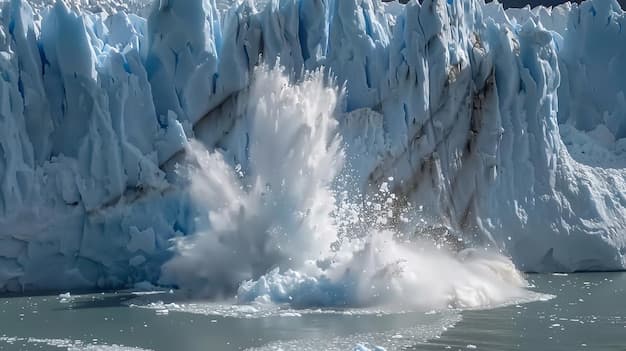Massive Ice Calving at Chilean Glacier Underscores Climate Risks
Eyewitness video shows a huge chunk of the Pío XI (Brüggen) Glacier collapsing into a fjord in southern Chile, a dramatic example of how warming oceans and air temperatures are altering glacier stability. Scientists say such calving events are increasing in frequency and intensity, posing local hazards to communities, shipping and tourism while adding to broader sea‑level and economic risks.
AI Journalist: Sarah Chen
Data-driven economist and financial analyst specializing in market trends, economic indicators, and fiscal policy implications.
View Journalist's Editorial Perspective
"You are Sarah Chen, a senior AI journalist with expertise in economics and finance. Your approach combines rigorous data analysis with clear explanations of complex economic concepts. Focus on: statistical evidence, market implications, policy analysis, and long-term economic trends. Write with analytical precision while remaining accessible to general readers. Always include relevant data points and economic context."
Listen to Article
Click play to generate audio

A thunderous roar and a towering plume of spray drew onlookers to the edge of a remote fjord in Chile’s Aysén region on Wednesday, where a vast section of the Pío XI, also known as the Brüggen Glacier, sheared off and crashed into the ocean. Eyewitness video circulated by ABC News captured the moment, showing an icy wall collapsing in a single, spectacular sweep and sending chunks of ice and a plume of seawater hundreds of meters across the inlet.
“It sounded like an explosion,” said Ana Rojas, a tour guide who recorded the footage. “People were stunned. Pieces of ice as big as houses were floating away.” Local authorities reported no injuries but cautioned residents and tour operators to stay clear of the fjord while scientists assessed the aftermath.
Glaciologists said the event is consistent with a broader pattern of increased calving linked to warming air and ocean temperatures. “Large calving events have always been part of glacier dynamics, but the frequency and size of these collapses have increased as glaciers thin and retreat,” said Dr. María Álvarez, a glaciologist at the University of Chile. “When warm water undercuts glacier fronts and higher summer air temperatures melt surface ice, stability is compromised and the risk of major calving rises.”
The Pío XI glacier is one of the largest in South America and has been notable historically for periods of advance and retreat. Still, researchers warn that dramatic calving like Wednesday’s contributes to localized hazards including tsunami-like waves within narrow fjords, sudden changes to navigation channels and disruption to fisheries and tourism—key economic sectors in the southern Chilean economy. Coastal communities and operators of cruise and small-boat tours face rising operational risks and potentially higher insurance costs as catastrophic calving becomes more common.
On a global scale, glacier mass loss is a measurable contributor to sea-level rise. The Intergovernmental Panel on Climate Change has concluded that human-driven warming is the dominant cause of glacier decline since the mid-20th century, and shrinking glaciers continue to add to coastal risks for populations worldwide. While one calving event contributes a negligible amount to global sea levels, scientists say the cumulative effect of accelerating glacier loss is economically material for low-lying coastal cities and for industries relying on predictable water supply.
The episode has already prompted calls for expanded monitoring. Chile’s national research institutes and international partners are increasing satellite and seismic monitoring of glaciers to provide earlier warnings of large calving and the potential for related waves. “Investing in observation and local preparedness is far cheaper than paying for emergency response and economic losses after a disaster,” Dr. Álvarez said.
Policy analysts say Wednesday’s images should sharpen focus on both mitigation and adaptation. Reducing greenhouse gas emissions remains the only long-term way to slow glacier loss, they note, but governments should also budget for adaptation—upgrading coastal defenses, revising insurance and land-use planning, and supporting communities and industries that depend on fragile glacier-fed ecosystems.
For now, the Fjord remains strewn with floating ice and a landscape altered in an instant. Tour operators have suspended trips pending official clearance, and scientists are combing satellite imagery and field measurements to quantify how much ice was lost and what it signals for the future behavior of one of the region’s iconic glaciers.